Rome is one of those can’t-miss cities that’s sure to be on every traveler’s bucket list.
With its ancient history and impressive artistic heritage, Rome is filled with world wonders, and I probably don’t have to convince you that you should go!
However, there is so much more to Italy’s capital than traditional highlights like the Colosseum, the Vatican, and the Trevi Fountain.
If you’ve already visited Rome, there are plenty of reasons to go back and visit Rome off the beaten path to explore a side of the city that most visitors never experience.
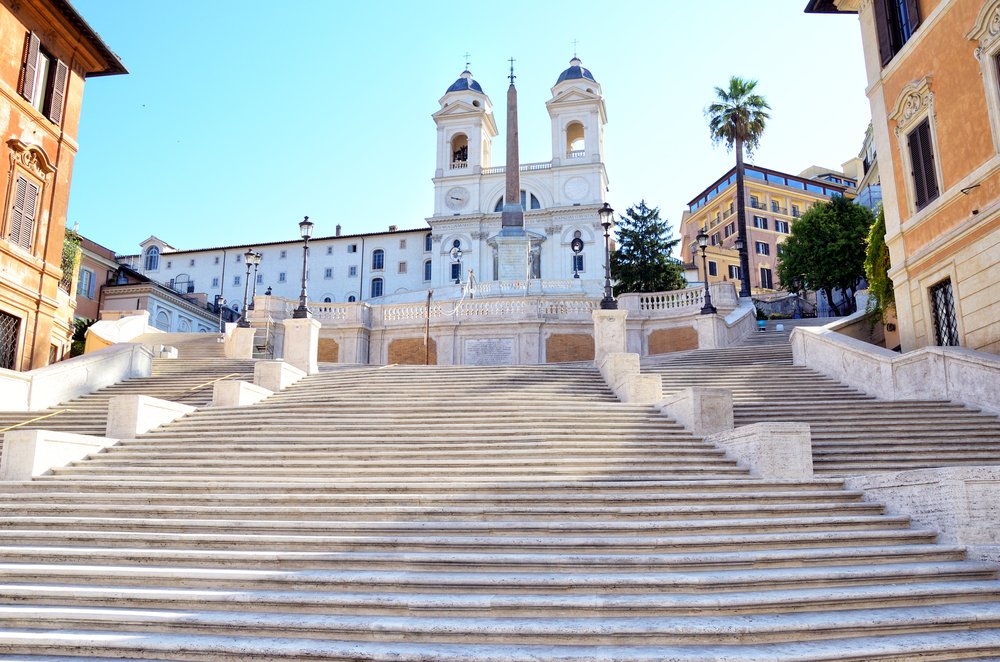
Covering over nearly 500 square miles, there are so many hidden gems in Rome where you can enjoy a (mostly) crowd-free experience!
Living in Rome for many years, I know that there’s a secret side to Rome that few get to see: yes, there are still many non-touristy places to visit in Rome!
From unique scenic views and lush city parks to gorgeous neighborhoods and lesser-known museums, here are some of Rome’s hidden gems you should absolutely check out on your next Rome itinerary.
Hidden Gems in Rome & Off the Beaten Path Favorites
Quartiere Coppedè
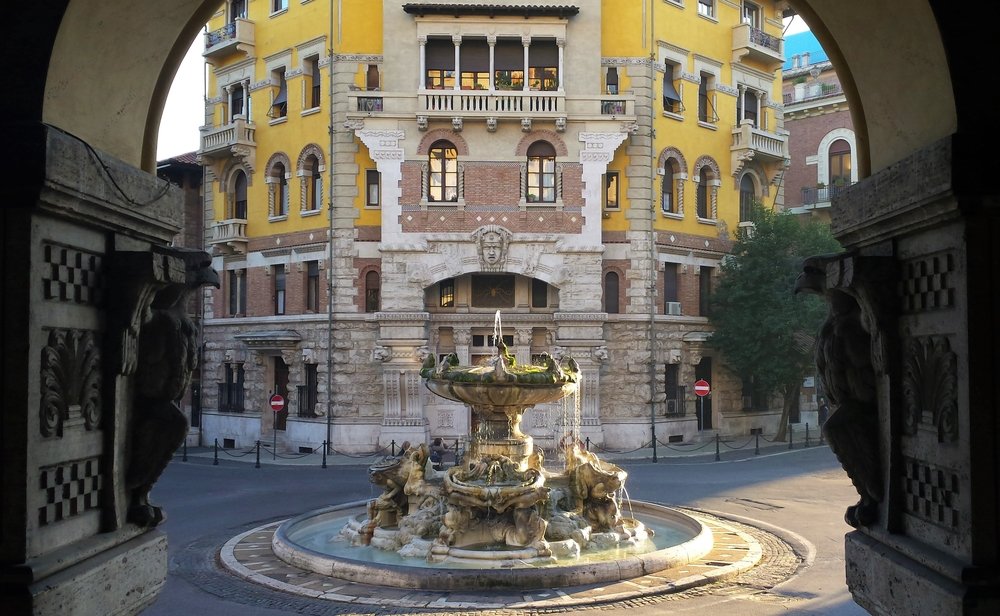
Far from the buzzing historical center and most tourist attractions, Quartiere Coppedè is one of the most overlooked hidden gems in Rome.
A small area of the Trieste neighborhood, in the northeast of Rome, Coppedè was designed by architect Gino Coppedè and built between 1913 and 1927.
A walk around the neighborhood will make you feel like you landed in a city straight out of a fairytale!
The buildings are an eclectic mix of styles, from Baroque and Neo-Gothic to Art Nouveau.
Enter the neighborhood through a big arch with a massive chandelier – Arch of the Palaces of the Ambassadors – and start admiring the buildings around Piazza Mincio.
Must-see buildings are Palazzo del Ragno and I Villini delle Fate. In Piazza Mincio, you’ll also see the Fountain of the Frogs.
Urban legends talk about the legendary Beatles bathing in this fountain after a night out at nearby Club Piper!
Capuchin Crypt
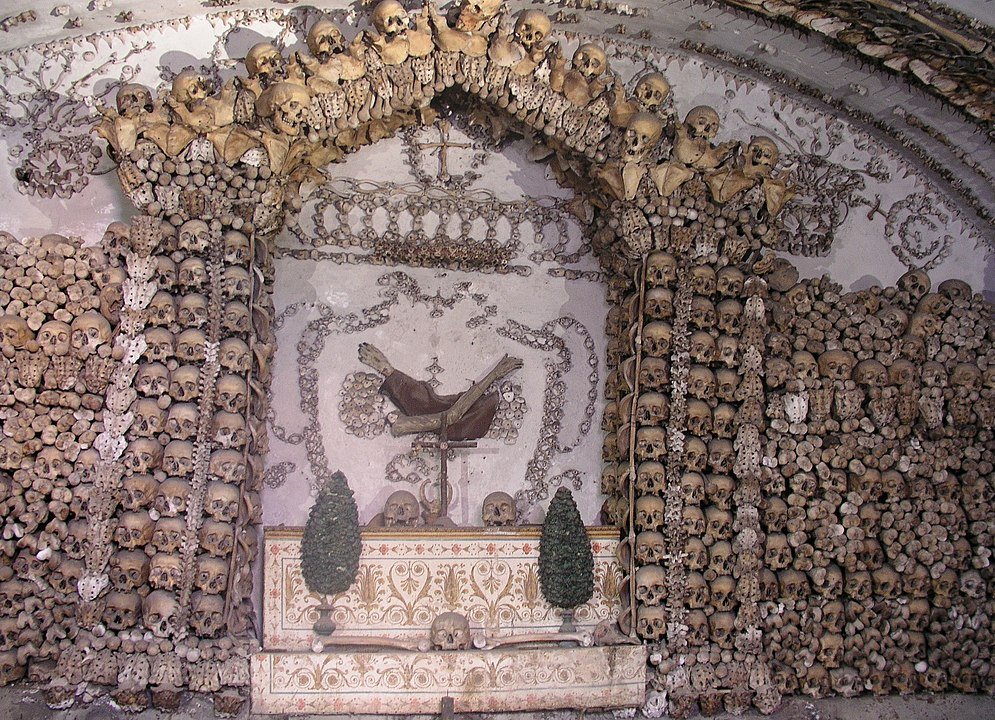
Part of Rome’s rich history is definitely on the macabre side, and this is a perfect example!
On Via Vittorio Veneto, just a few minutes walking from piazza Barberini, you can visit a crypt decorated with skulls and bones.
The Capuchin Crypt is inside the monastery Our Lady of the Conception of the Capuchins and was built between 1626 and 1631 by order of Pope Urban VIII, whose brother Antonio Barberini was a Capuchin.
The crypt contains the remains of roughly 3,600 Capuchin monks buried between 1500 and 1870.
This is just one of many catacombs in Rome!
While this can be a bit of a creepy sight, it’s also a fascinating spot to visit and get in touch with Rome’s lesser-visited historical side.
As an added bonus, in the museum, you can also see a Caravaggio painting of Saint Francis.
You can visit the museum and crypt on your own, or you can take a guided tour.
Guided tours are even available at night if you’re up for a spooky adventure in the crypt after dark!
(Read here for more fun things to do in Rome at night!)
The Catacombs of St. Callixtus

When traveling along the Appian Way, one of the most important ancient Roman roads, you’ll eventually come across the greatest catacombs in Rome.
Back in the 3rd century CE, this was the official cemetery of the Church of Rome.
Many important people were buried here, including 16 popes and many martyrs.
The catacombs of St. Callixtus are not very close to Rome’s city center, but you can pair your visit with a pleasant walk along the Appian Way (another lovely Rome hidden gem) for a wonderful excursion.
During your visit, be sure to see Popes’ burial place, also known as “the little Vatican”.
Other sights to look out for are the crypt of St. Cecilia (patron saint of music), the niches of the sacraments decorated with frescoes, and the crypts of St. Gaius and St. Eusebius.
You can pre-book an official guided tour of the St. Callixtus catacombs online here.
Botanical Garden of Rome

In most cities, a botanical garden would be a main attraction, but Rome has so many historical landmarks that this one flies under the radar!
The university-owned Botanical Garden is a gorgeous, peaceful spot to spend a few hours walking among thousands of species of plants, a bamboo grove, and beautiful fountains.
The garden also features a small and lovely Japanese tea garden, with a pond and typical Japanese decor.
The Botanical Garden of Rome is in Parco del Gianicolo, on top of Janiculum Hill, near the Trastevere neighborhood.
There is a small entrance fee, but the visit is well worth it.
Inside the garden, you can also visit the Butterfly Eden at an extra cost.
Protestant Cemetery
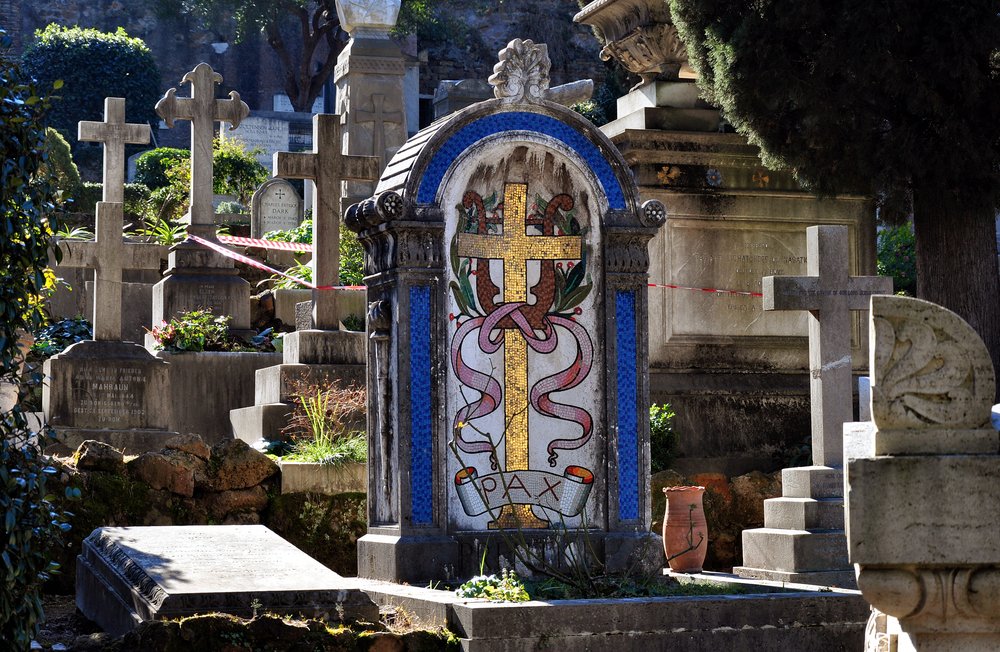
Looking for the perfect non-touristy thing to do in Rome? In the neighborhood of Testaccio, you can visit the most beautiful cemetery in Rome.
The Protestant Cemetery is also known as the Cemetery of Artists and Poets because many artists were buried here.
These famous artists include the English poets Percy Bysshe Shelley and John Keats, the historian Antonio Gramsci, and writer Andrea Camilleri.
The beauty of this particular cemetery lies in the sculptures that decorate some of the tombs, but by far the most famous has to be the Angel of Grief embracing the tomb of Emelyn Story.
A meditative walk around the peaceful cemetery is a great way to spend an hour or two in Rome, while enjoying a bit of a break from the crowds as you explore Rome off the beaten path!
Villa Torlonia Museums
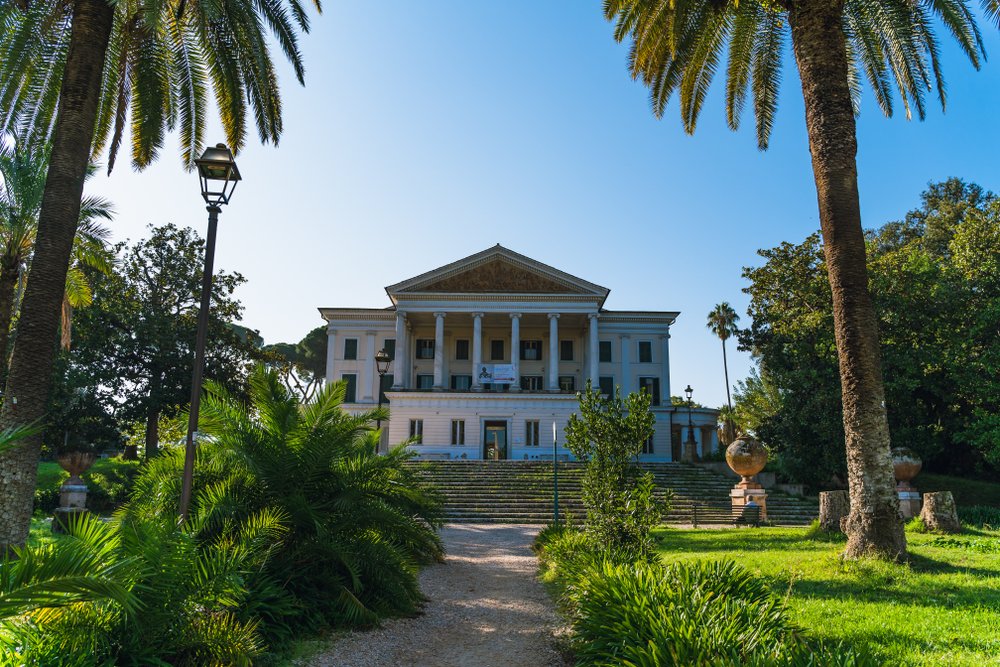
Villa Torlonia is a park in northeast Rome, not far from Piazza Bologna.
Like most parks in Rome, it gets its name from a villa that belonged to a noble Roman family.
Recently, the villa was turned into a museum, which breathed new life into the site, as many exhibitions take place here all year round.
There are three main buildings you can visit, Casino Nobile, Casino dei Principi, and Casina delle Civette.
Aside from the permanent exhibitions, there are also temporary ones. Be sure to check the official website to find out what’s open during your visit!
Aside from visiting the museums, you can also simply relax on the grass and enjoy the shade on a warm day or just walk around while exploring the park.
This is a great way to spend a laid-back day in Rome!
Villa Ada Savoia

Want to keep exploring Rome off the beaten path and explore some of the city’s quieter side?
Take a break from sightseeing and relax in one of Rome’s most beautiful city parks.
Villa Ada Savoia sprawls over 160 hectares in the north of Rome, along Via Salaria.
The land used to be owned by the Savoy royal family, hence the name. The park was later owned by Count Giuseppe Tellfner, who named the property after his wife, Ada.
In the villa, you can still find remains of the buildings built by the families who owned the park over the years, like the Temple of Flora.
This building was formerly a coffee house, with a garden and a cast iron fountain in the center that you can still see.
The park is truly massive, so you will feel like you are miles away from the city when, in reality, it takes just 25 minutes to reach it by bus from Termini!
Be sure to schedule some time here, and let Villa Ada Savoia be your oasis away from the hustle and bustle of the city!
Catacombs of Priscilla

Not too far from Villa Ada Savoia, in the Trieste neighborhood, the Catacombs of Priscilla are one of the most overlooked hidden gems in Rome.
Being so far from most landmarks, it’s not easy to accidentally stumble upon the catacombs, but it’s worth going out of your way to take in their beauty and history.
If you’re looking for unusual sights in Rome, head over to the convent of the Benedictine Sisters of Priscilla to explore the catacombs.
You can only take a guided tour (conducted in Italian, English, French and Spanish!) of the catacombs, available in different time slots.
In addition to the tombs, you can see many beautiful frescoes dating back several centuries, including what is believed to be the oldest depiction of the Virgin, dating back to the 2nd or 3rd century.
Trajan’s Market
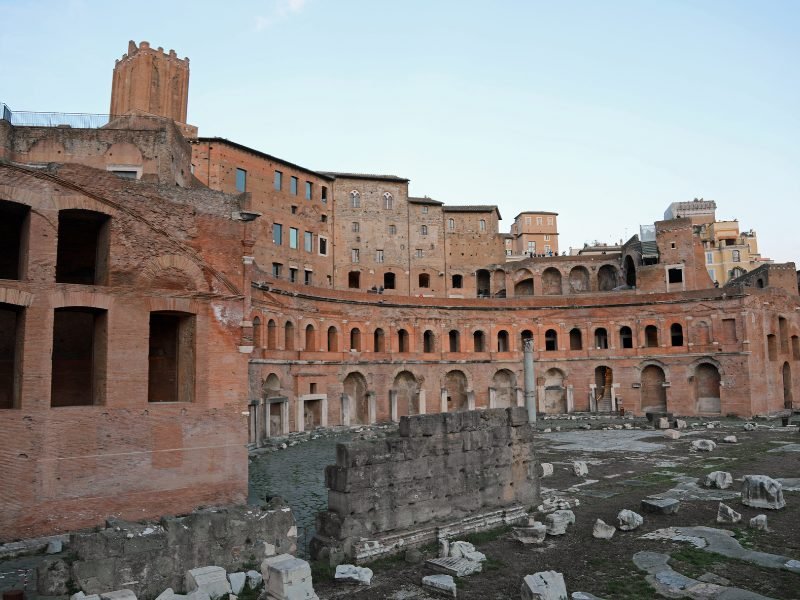
While most tourists won’t pass up a visit to the Colosseum and Roman Forum, many overlook the nearby Trajan’s Market.
Located just opposite the Roman Forum, Trajan’s Market is said to have been a sort of shopping center during Roman times.
However, archaeologists have now concluded that the complex of buildings was actually primarily dedicated to managerial and administrative activities.
Trajan’s Market evolved over the years to become a residence for nobility, a military fortress, and even military barracks.
Inside, apart from visiting the building itself, you can see many historical artifacts, including ancient sculptures and building decorations.
Galleria Sciarra
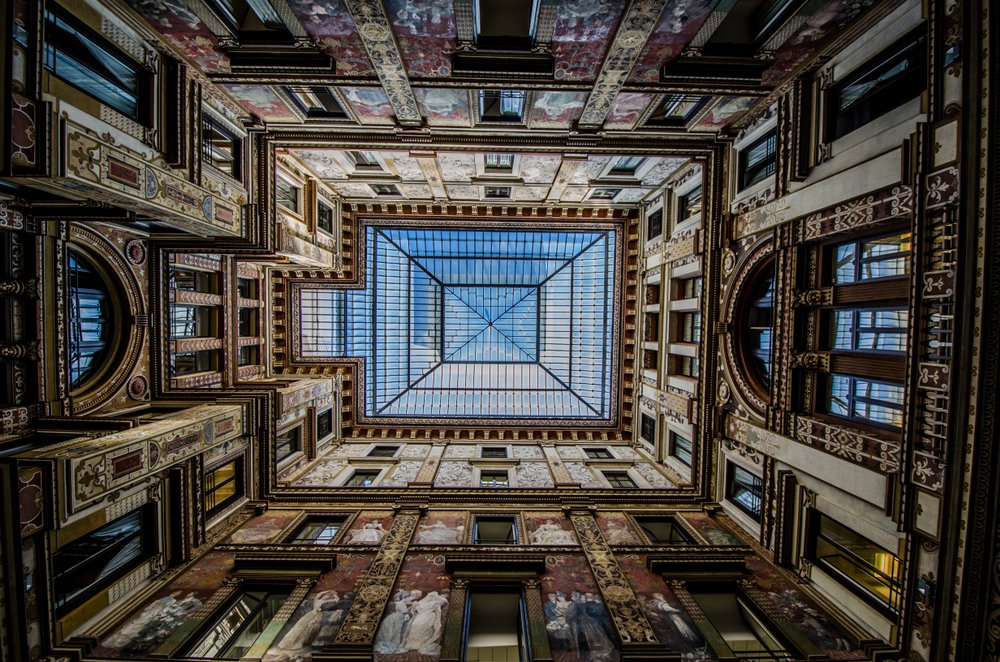
While exploring the historical center of Rome, head over to Via Marco Minghetti and check out this little gallery in Art Nouveau style.
The small gallery covered by a glass ceiling is actually a passageway, and it’s completely free to explore during office hours.
Inside the gallery, you can see beautiful frescoes dating to the 19th century in one of the rare examples of Art Nouveau in the Italian capital city.
Despite being so close to tourist hotspots like the Trevi Fountain, Galleria Sciarra is unknown to most visitors, and even a surprising number of Rome locals don’t know about this hidden treasure!
Be sure to look up in the gallery courtyard for some beautiful views!
Baths of Caracalla

The Baths of Caracalla were the second-largest Roman public baths after the Baths of Diocletian.
However, unlike the latter, many ruins of the Baths of Caracalla are still standing and can be visited.
Despite being within walking distance of the Colosseum, the baths are not a popular tourist attraction, so you can really take your time without worrying about crowds.
The Baths of Caracalla were built at the beginning of the third century CE and were in use for roughly three centuries, before falling into disuse and slowly becoming ruins.
Today, you can still walk among the ruins and imagine how this impressive place must have looked nearly two millennia ago.
If you’re visiting Rome during the summer months, be sure to check out the performance schedule in the Auditorium Caracalla, as Rome’s Opera Theater arranges some incredible shows in this unique location!
Villa Doria Pamphili
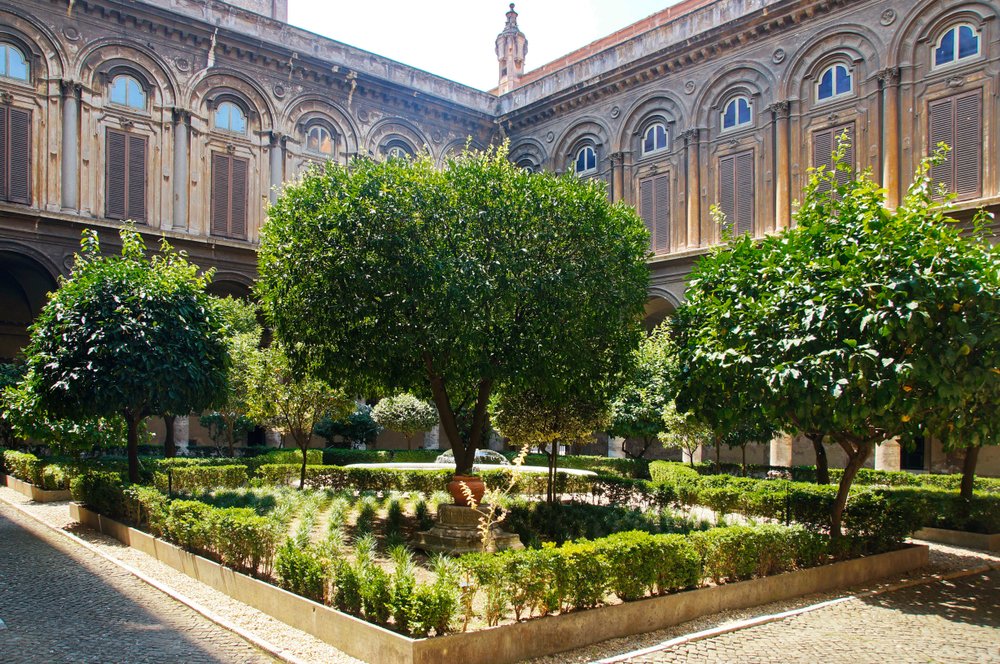
Villa Pamphili is Rome’s largest city park and, like most other parks, it features a villa that belonged to a noble Roman family.
This is also the best-preserved villa in Rome and probably the most beautiful one, with the curated gardens, fountains, and a beautiful lake.
Make sure not to miss the Fountain of Venus, the Fountain of Cupid, Fountain Mascherone, Villino Algardi, Villino Corsini, and the Pamphili Chapel.
Villino Algardi, also known as Casina del Bel Respiro, is now a government office, so it is not open to the public.
Guided visits are available one Saturday per month with a reservation, so plan ahead if you want to see inside
You can easily spend at least half a day around Villa Pamphili, checking out the buildings and fountains and enjoying the peaceful atmosphere.
This Rome hidden gem is really quiet, so it’s a great place for a picnic when the weather is nice — pack a lunch and stay a while!
Via Piccolomini
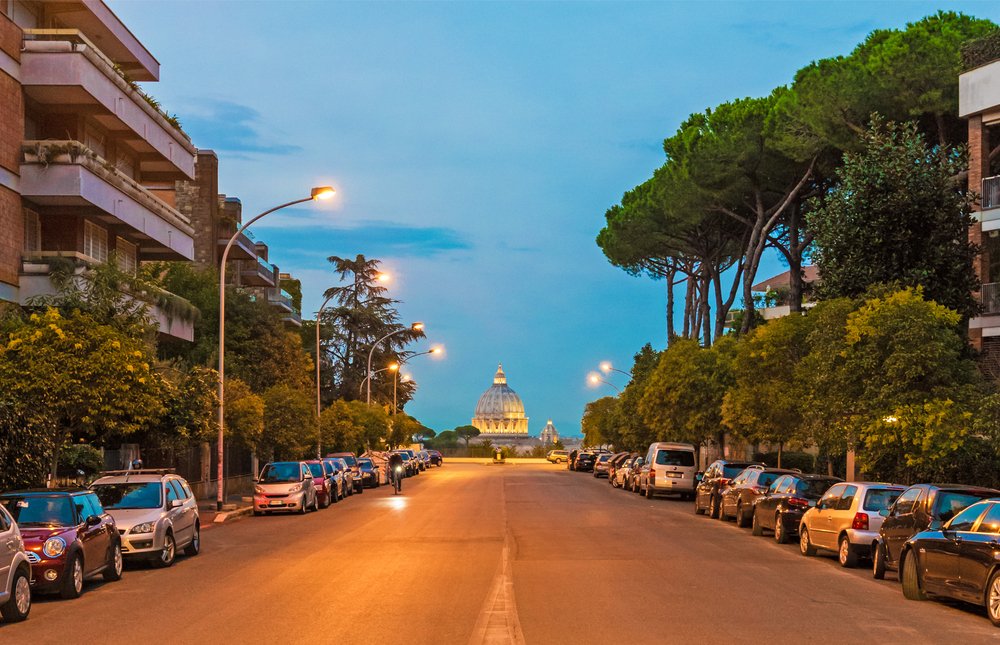
At first glance, Via Nicolò Piccolomini looks like just any other street in the western part of Rome, close to Villa Pamphili.
However, if you look closely, there’s a unique feature here that definitely warrants a visit!
Walking down the street, you’ll see Saint Peter’s Chapel in the distance. Due to an optical illusion, the further away you are, the bigger the chapel seems!
As you walk towards it, Saint Peter’s Chapel appears smaller and smaller until it merges with Rome’s skyline.
The spot is a bit far from the city center and other landmarks, but you can easily go check it out after a walk around nearby Villa Pamphili.
Palazzo Zuccari

One of the fun thing about some of Rome’s hidden gems is that many are hidden in plain sight, near tourist areas but overlooked unless you’re in the know.
That’s true of Palazzo Zuccari, right in the heart of Rome’s busiest area!
At the top of the Spanish Steps on Via Gregoriana, you’ll encounter a quite unusual building.
Palazzo Zuccari, also known as the House of Monsters, is famous for the front door and windows featuring monster faces.
Still, despite this unique and iconic style of decoration, not very many people know about this building, and it’s quite easy to pass by without noticing it.
The building was built at the end of the 16th century by Federico Zuccari, a Mannerist painter and architect who wanted to impress his guests with the unusual façade.
While the House of Monsters has changed hands several times over the centuries, the unique façade is the one thing that remained intact.
The building now houses the Biblioteca Hertziana, a rich library for art students and researchers.
Now and then, the library opens for guided visits, but you’ll have to check the website and book a spot in advance.
Villa Farnesina
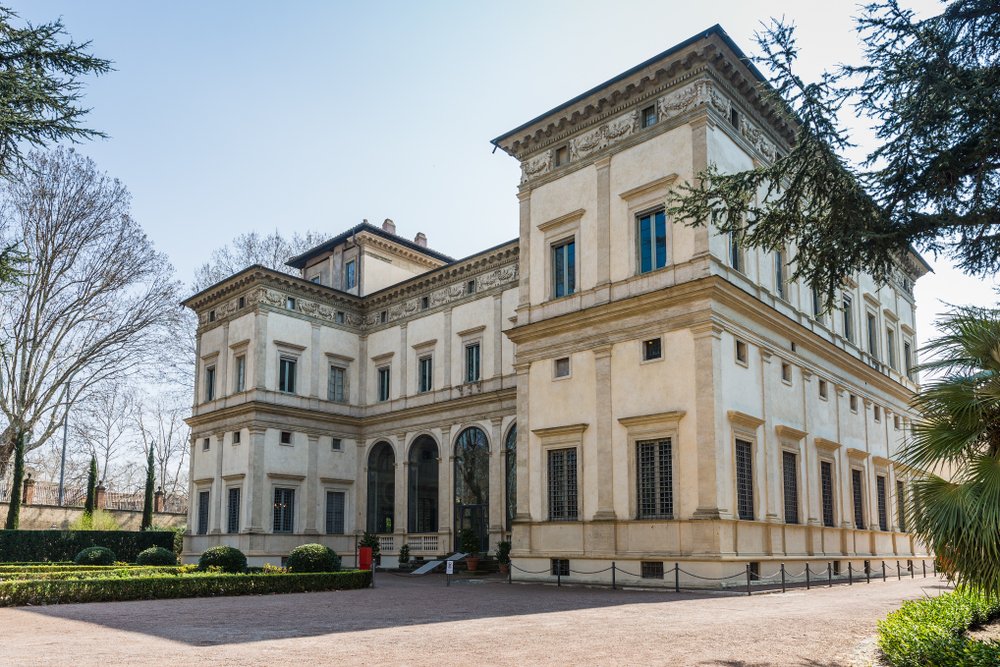
If you’re an aficionado of art, you can’t pass up a visit to Villa Farnesina, one of the lesser-known and most underrated art museums in Rome.
Located in the Trastevere neighborhood, Villa Farnesina was built in the 16th century by a rich banker, Agostino Chigi, who commissioned the painter and architect Baldassarre Peruzzi to oversee construction.
The villa features impressive frescoes made by several Renaissance painters, including Raphael.
A few of the must-see frescoes are those in the Loggia of Cupid and Psyche, the Loggia of Galatea, the Hall of the Frieze, Alexander and Roxane’s Wedding Hall, and the Room of the Perspectives.
On top of the villa’s brilliantly designed interior, you can also visit the beautiful gardens.
Local’s Tip: If you have a ticket for the Colosseum or the Vatican Museums, you can show them to get a discount on the entry ticket to Villa Farnesina.
Parco degli Acquedotti
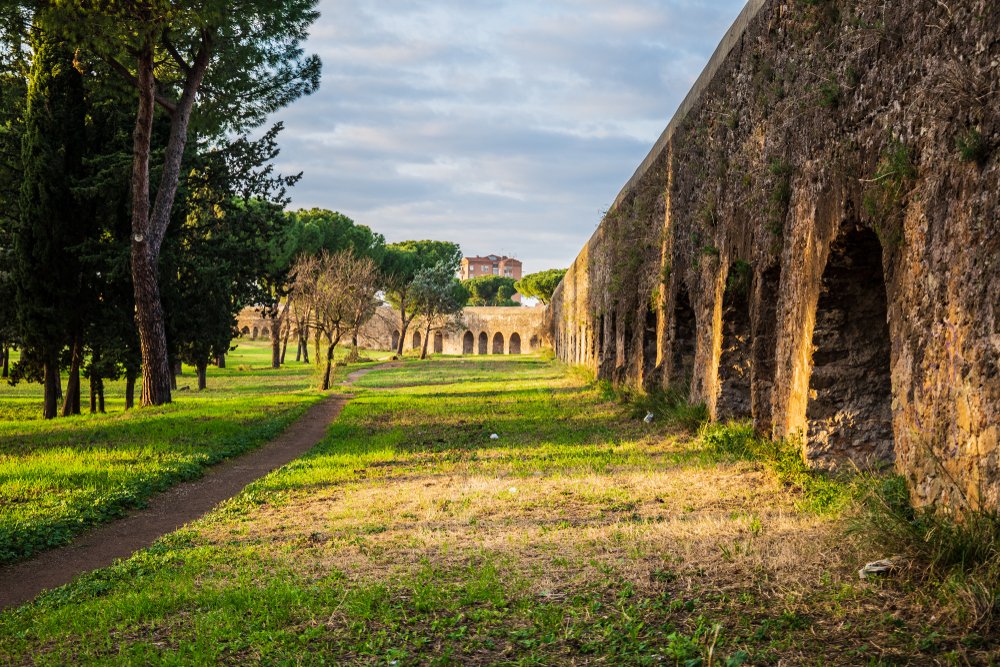
Parco degli Acquedotti (Park of the Aqueducts) is a large public park in the southeast of Rome.
But it’s just one smaller part of the second-largest urban park in Europe, the Appian Way Regional Park.
The name comes from the Roman aqueducts that you can still see in the vast park.
The ruins of the aqueducts include the modern Aqua Felix, which runs for 15 miles until the Fontana dell’Acqua Felice on the Quirinal Hill, and the Aqua Claudia, an ancient Roman aqueduct built in the first century CE.
In the park, you can also wander through the ruins of Villa delle Vignacce (Villa of the Vineyards), built in the 2nd century CE.
If you want, you can even make a whole day of it, because this is also a great location to relax or have a picnic far from the crowds of Rome’s city center!

Roxana is a Romanian-born freelance travel writer who has lived in Italy for over 15 years. She has a Master’s in Journalism and a Bachelor’s in Film Studies, and she studied at Università degli Studi di Roma Tre. Besides her native Romania, Roxana has lived in Rome, Lisbon, and Berlin, and she has traveled through much of Europe in search of hidden gems, history, and culture.